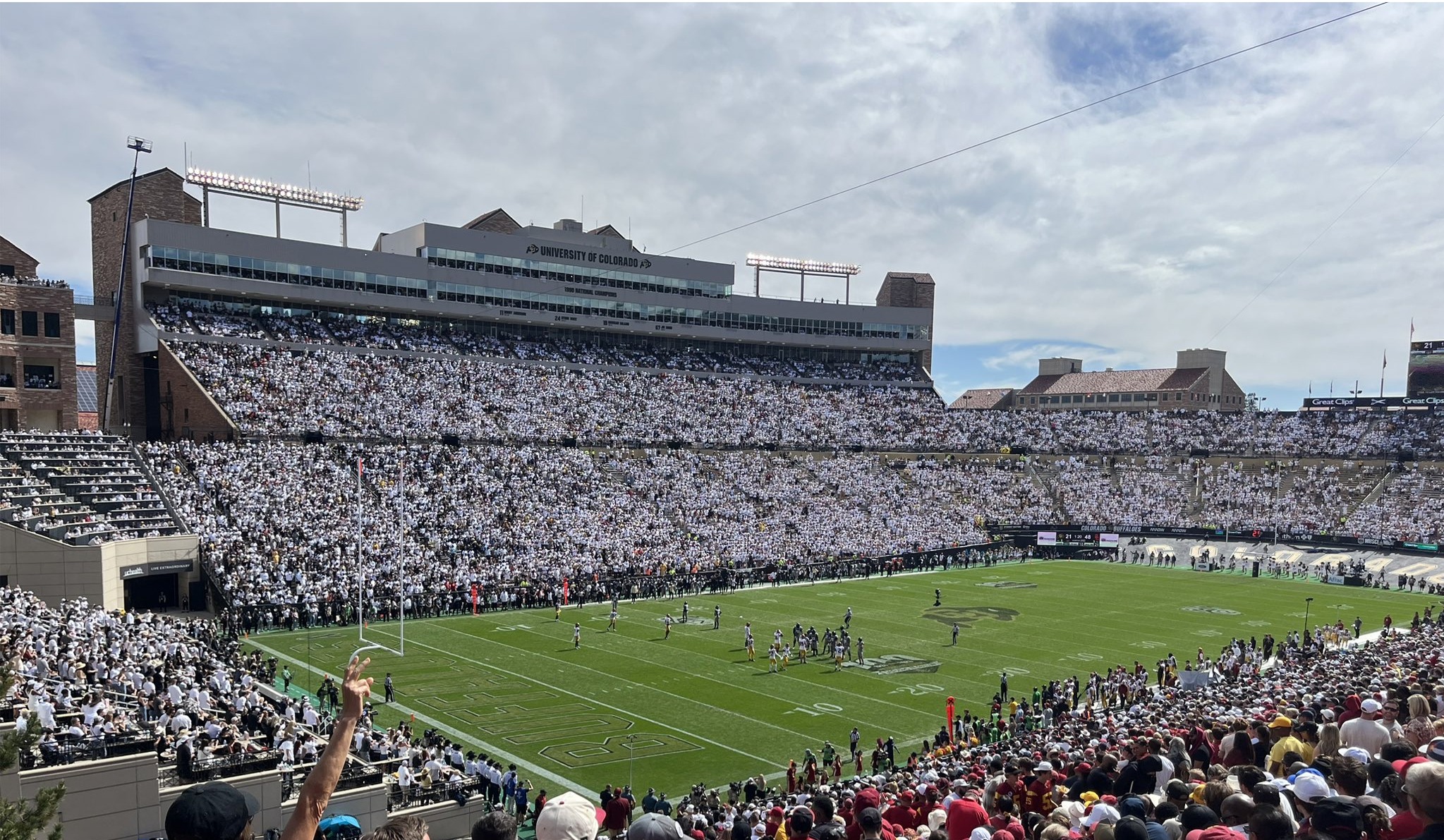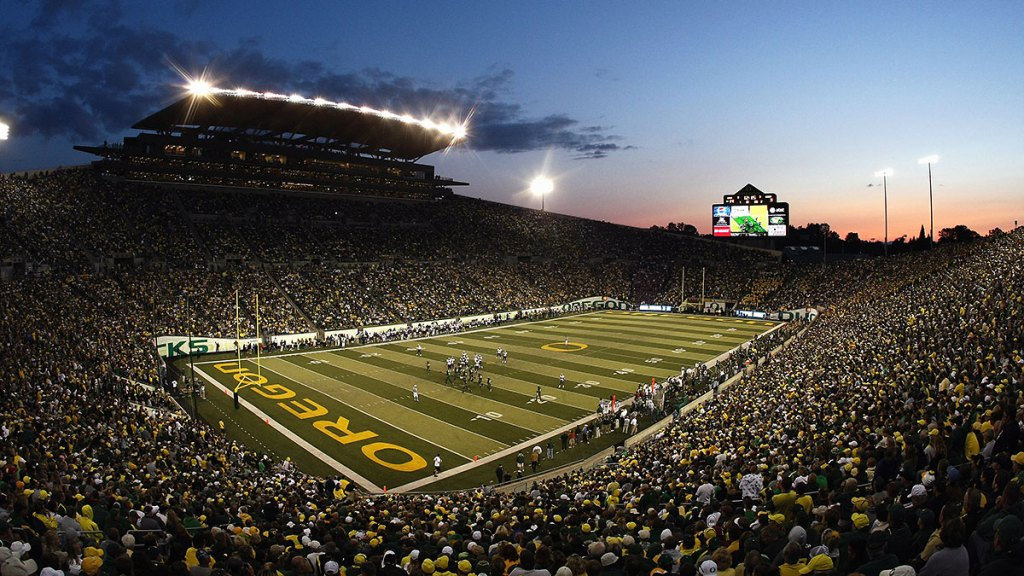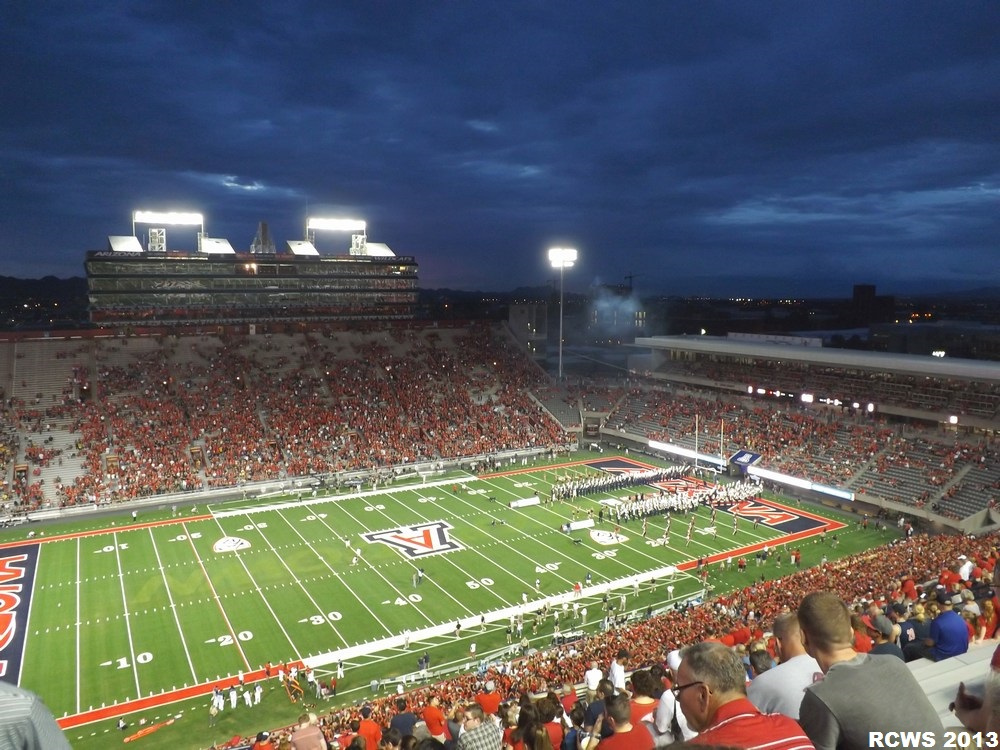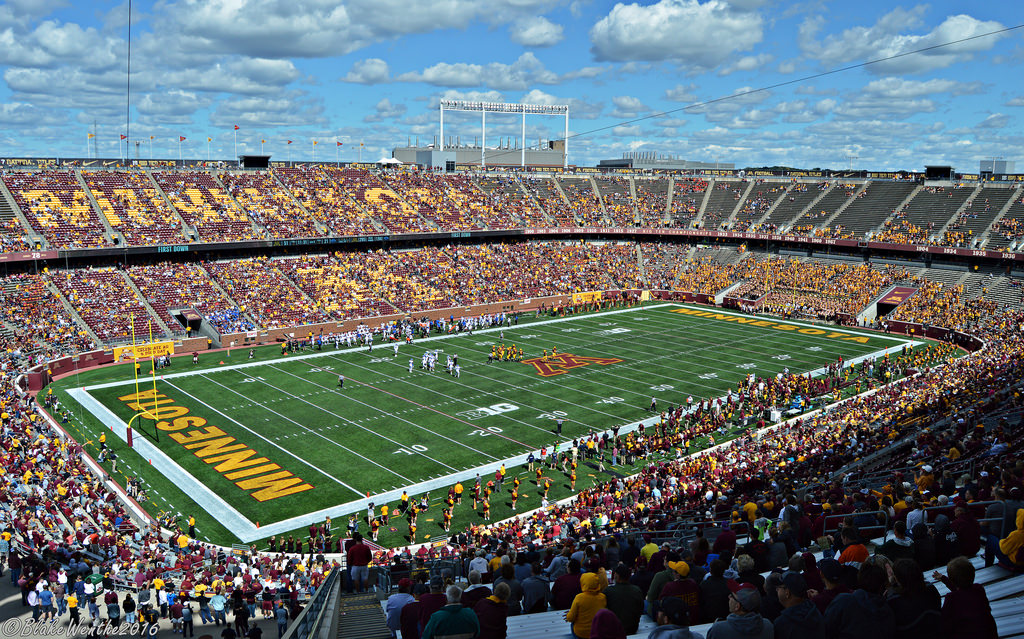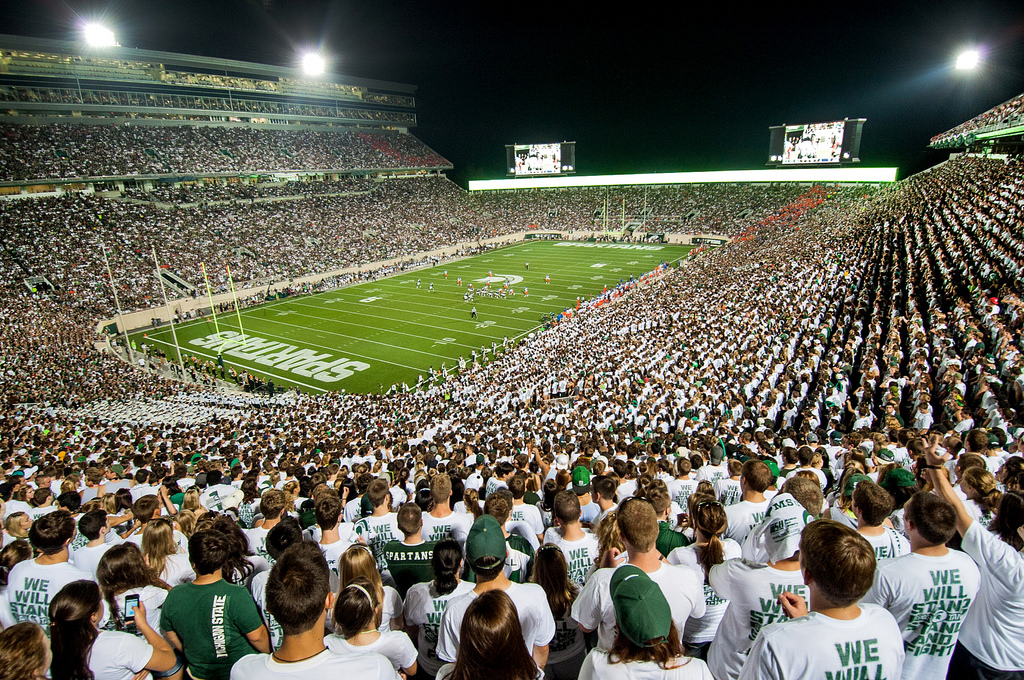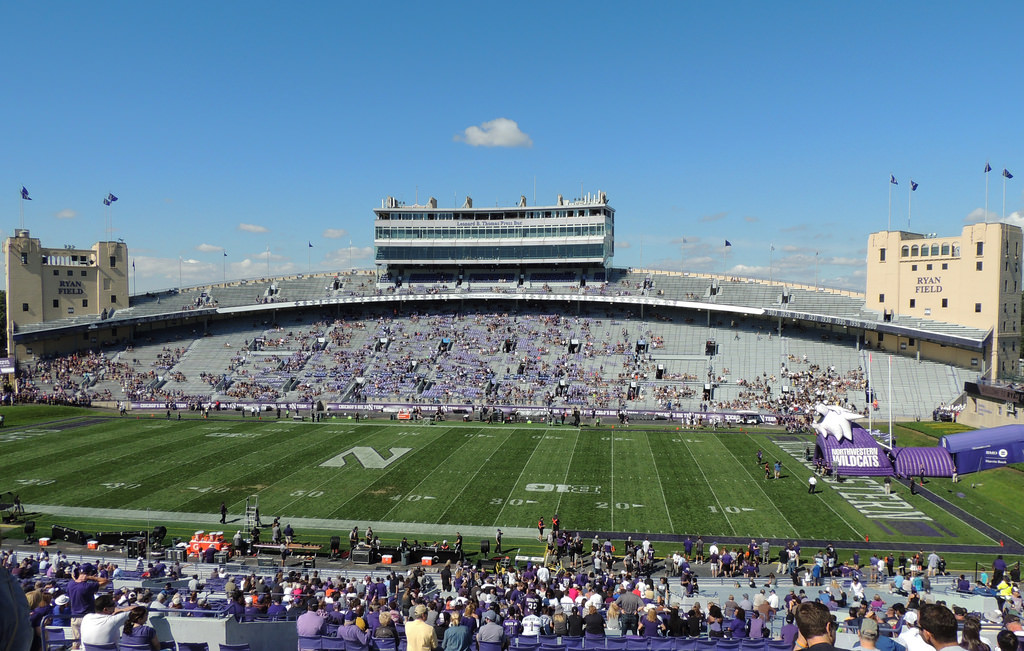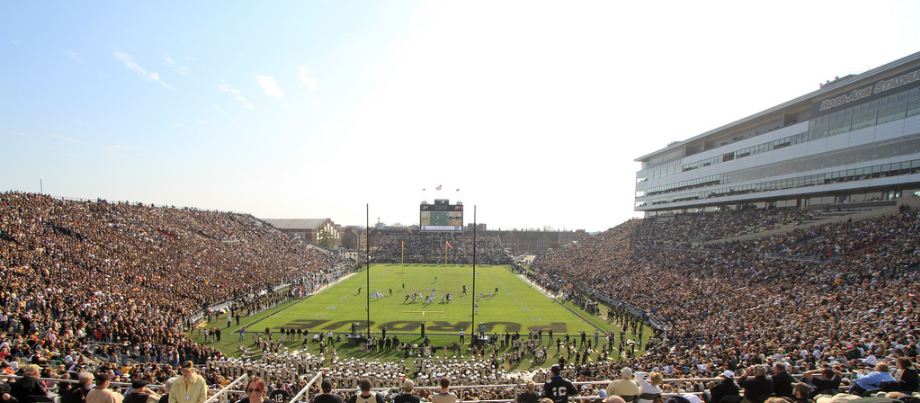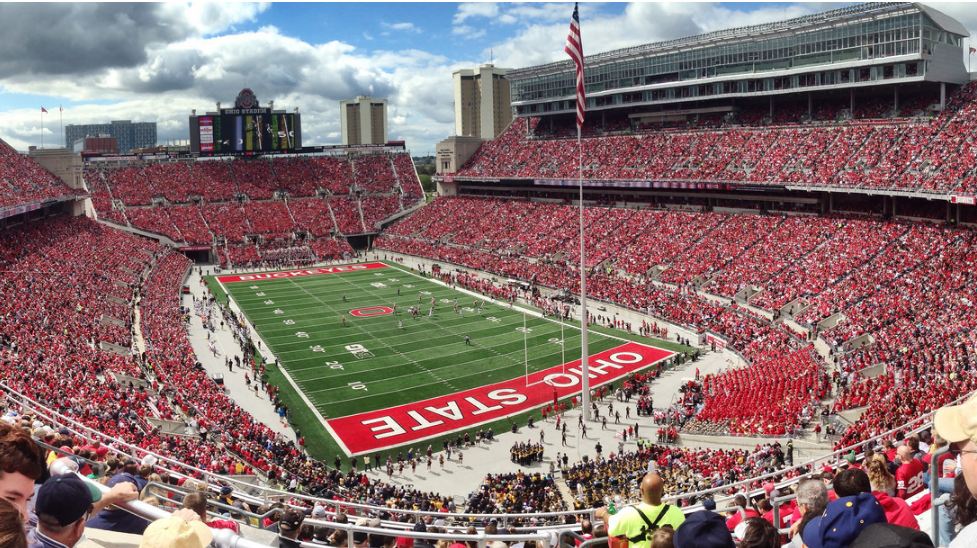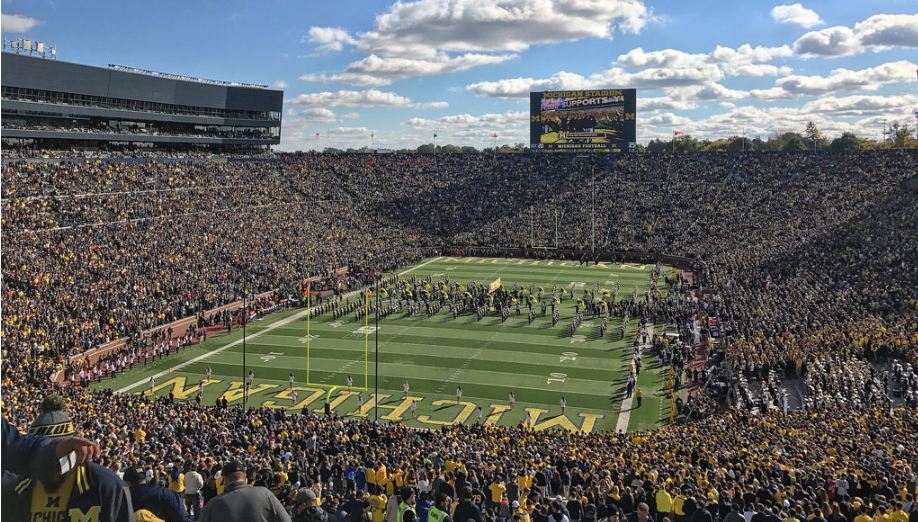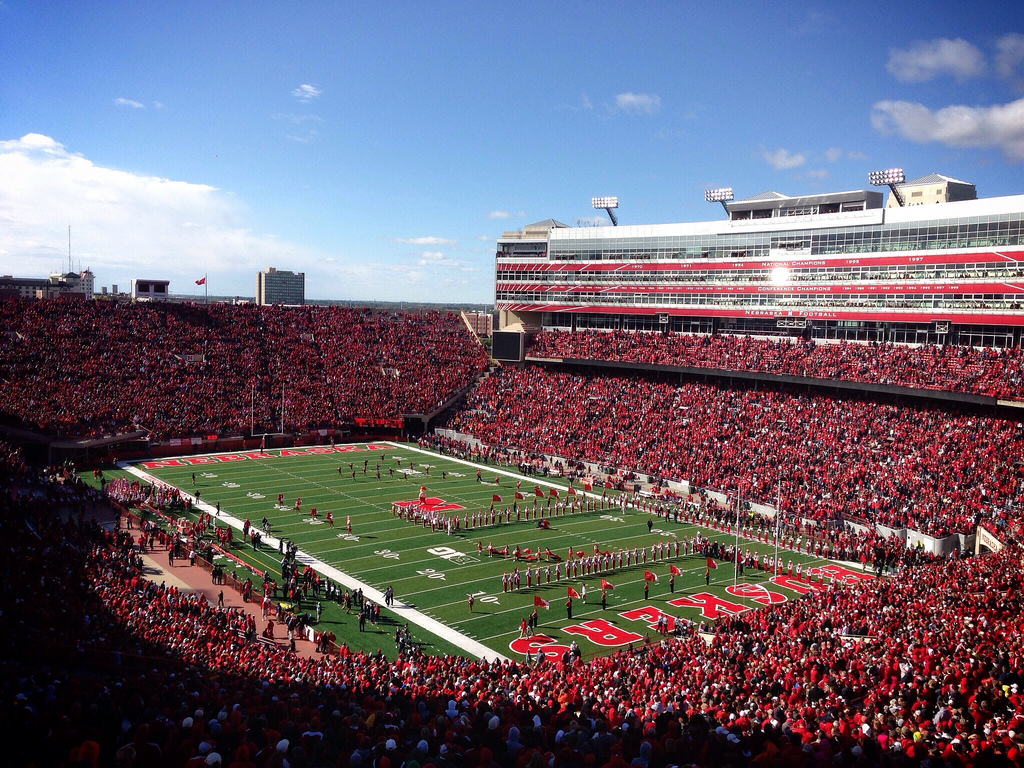With its magnificent views of the Rocky Mountains, Folsom Field is one the most picturesque stadiums in the Pac 12. Prior to playing at Folsom Stadium, the Colorado Buffaloes played at Gamble Field from 1890 until 1923. By the 1920s as support grew for the team, a new stadium was needed. Colorado President George Nolin led
Continue Reading →
Can you name one stadium in college football where you will see a motorcycle ride across the field? If you guessed Autzen Stadium you are correct! Noted as being one of the most intimidating venues in college football by The Sporting News, each game starts with the Oregon Duck mascot leading the Oregon Ducks onto
Continue Reading →
Situated in the Sonoran desert, between five ranges of mountains, including the beautiful Santa Catalina Mountains is the University of Arizona campus. The history of the football program began in 1899 and the team did not pick up the nickname, the “Wildcats” until 1914. In the late 1920s the 7,000 seat Arizona Stadium was constructed
Continue Reading →
After a quarter century of Golden Gophers football games indoors at the Metrodome, games are now played outside in the elements at Huntington Bank Stadium. From 1982 until 2008, the Golden Gophers played at the multipurpose Metrodome, sharing it with the Minnesota Twins (MLB) and Vikings (NFL). The Golden Gophers played for 57 seasons at Memorial
Continue Reading →
It’s…A beautiful day for football,” announced at every Spartan football game, no matter the weather, is just one of many traditions found at Spartan Stadium. In the early 1920s university officials decided to construct a new stadium for the football team to replace Old College Field. Completed by the 1923 season, the new stadium for
Continue Reading →
In a conference with some of the biggest stadiums in college football, Ryan Field is different, as it is one of the smallest stadiums in college football. Before moving into Ryan Field, the Northwestern Wildcats played many of their games at Soldier Field in Chicago. In the mid 1920s, William A. Dyche, Vice President of
Continue Reading →
As a quaint and unique stadium, Ross Ade Stadium has been the home of the Purdue Boilermakers for since the mid 1920s. Before Ross Ade Stadium’s construction, the Purdue football team played at Stuart Field. During the first few decades of the 20th century, Purdue had a very successful football team. David Ross and George
Continue Reading →
As you cross over the Lane Avenue Bridge and look to the right in astonishment, it’s obvious to passerby’s that you are headed to Ohio Stadium, home of the Buckeyes. Nestled along the banks of the Olentangy River, Ohio Stadium is one of the most recognized landmarks in college sports. In fact, Ohio Stadium, also
Continue Reading →
One word describes Michigan Stadium; huge. From the time it opened in 1927 until today, Michigan Stadium has maintained its status of being one of the largest stadiums in college football. Prior to playing at Michigan Stadium the Wolverines played at Ferry Field since 1906 and continually had to expand the stadium as interest in
Continue Reading →
Saturdays in the Fall, visiting teams step onto the field of a stadium known as a “Sea of Red” as 90,000 fans from across Nebraska fill Memorial Stadium to cheer on the Cornhuskers, making it one of the most intimidating stadiums in college football. The history of the stadium dates back to the early 1920s
Continue Reading →
